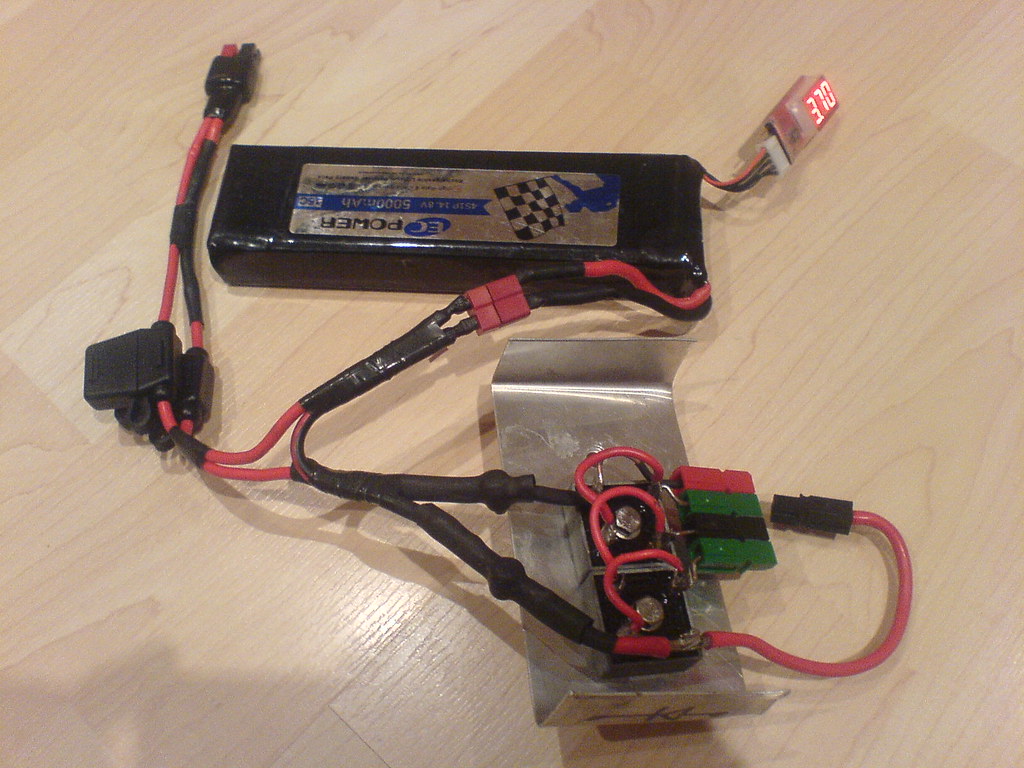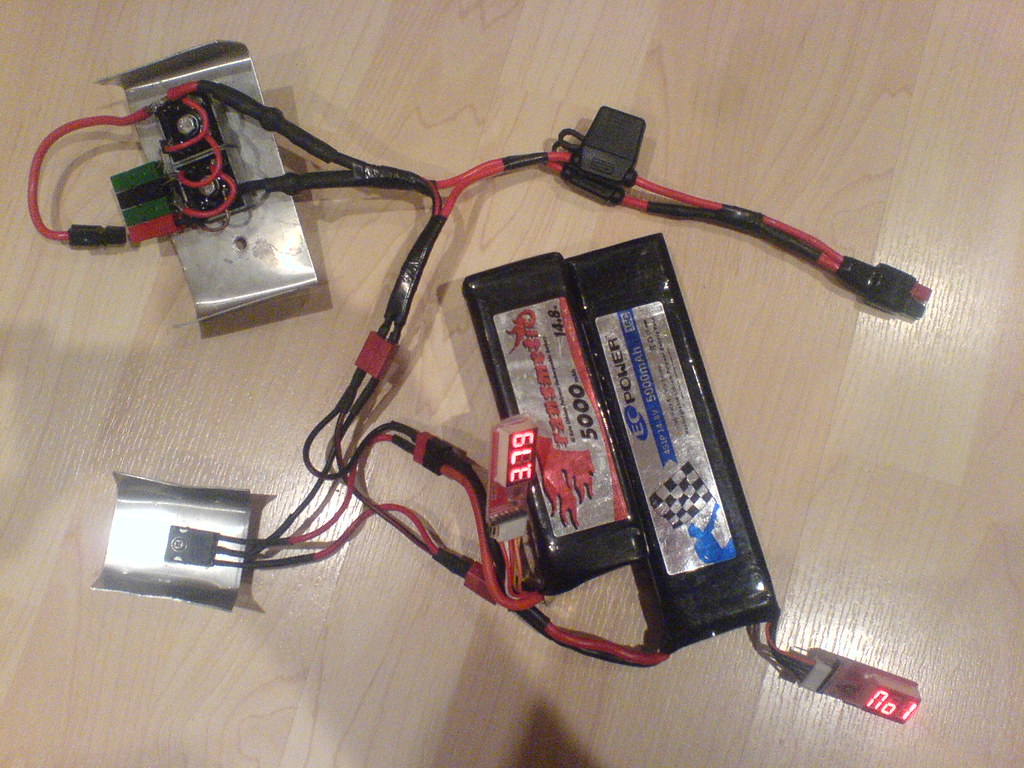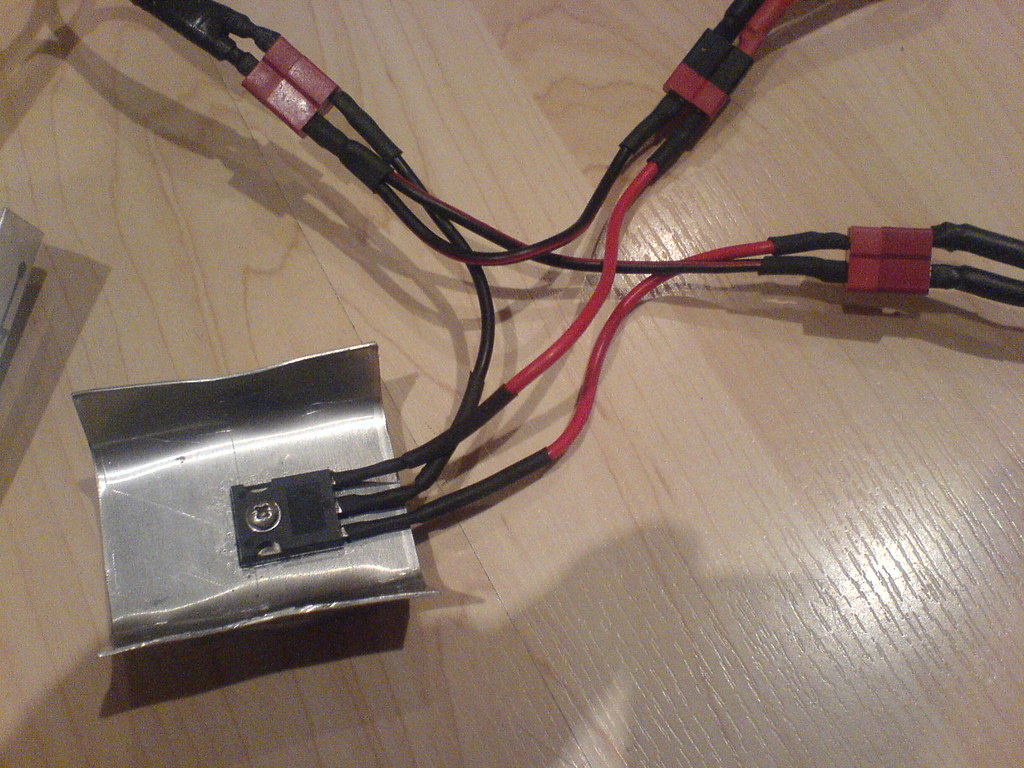Afternoon All
Just acquired a couple of 3300 4S1P lipos. What are others doing to drop the voltage to a more radio friendly 13.5v or thereabouts? I was thinking along the lines of a huge power diode or two rather than a dedicated voltage regulator - keep it simple and all that. The packs will be used with my 857 at full chat occasionally.
Cheers
Tim
G4YTD
In reply to G4YTD:
Frank G3RMD uses the power diode approach until the pack drops to something the radio is happy with then the diode is shorted out. Simple solution that generates no RF noise. However, converting the excess electrons stored in the cells into heat is an impure solution that offends the gods of engineering as it is not complex enough. The correct solution is a buck/boost converter that regulates the voltage with high efficiency and no RF switching noise. The diode will be simpler, cheaper, quieter and probably much reliable! 
Andy
MM0FMF
In reply to G4YTD:
Hi Tim,
Good luck with the new 4s1p lipos. I’m delighted with mine. I hope you obtained a sensible charger to use with them, as I feel that this is the key to safe and efficient use.
I use mine with my FT-857 and I rummaged in my junk box and used an old 4 terminal rectifier module which I configured in a series parallel arrangement. You finish up with two of the diode pairs in parallel and then both in series. Volts drop is about a volt across the module. I use molex type connectors on my battery, and transceiver, so I fitted a couple of appropriate connectors to the diode stack. I Remove the plug in diodes after my first activation of the day and use the battery directly on my second. I have easily managed a couple of hour long 50W activations from a single 4Ah LIpo. As a (nearly) fail safe measure I have resisted the urge to fit a bye-pass switch to the diode block. Sorry, I have no information on the diode block ratings, other than to say it is black encapsulated, old, and runs slightly warm at 50W.
73, Frank
In reply to MM0FMF:
Hmmm, 50p diode vs complex regulator…
Added to that Murphy’s law of if it can pack up just at the wrong moment it probably will, my money for now will be on the diode. The saving in weight over heating the component must be a winner. I usually have at least one 7Ah slab with me, sometimes two.
Thanks for the reply.
Could I give you a metaphorical poke re single 250b design too?
BTW, working in Edinburgh three days a week now - is there anything sota like in the area (Staying in the Holyrood park area).
Cheers
Tim
In reply to G3RMD:
Hi Frank
Keep it simple is good. Angering the gods with a switch would probably only lead to a smile on the face of ML&S as you order a new radio…
No problem with the type numbers etc, I have a bits box that is older than me, it should have something interesting in the lower levels that have not seen daylight for some time.
Thanks for the real life experiences with the lipo’s
73
Tim
In reply to G4YTD:
Arthur’s Seat in the city but you need permission to activate it.
Plus The Pentland’s are just outside the A720 ring road, Scald Law, Allemuir Hill, Black Hill: all less than 10 miles from city centre. A bit further away you have Black Mount, Mendick Hill, Broomy Law, East Cairn Hill.
Contact me off the list (mm0fmf AT hotmail.com) and we can chat more.
re single 250b design too?
Shuffles papers about on desk and looks busy whilst trying to divert attention elsewhere ![]()
Andy
MM0FMF
In reply to G3RMD:
Hi Frank,
“…I use molex type connectors on my battery, and transceiver, so I fitted a couple of appropriate connectors to the diode stack…”
Are the connectors fitted to the FT 857 a standard Molex plug and socket? If so what’s the model/reference number as I would like to get some.
Cheers, Pete M0COP
In reply to M0COP:
Hi Pete,
Sorry, I did not express myself very well so confusion reigns! I have left the original 857 connector and filter untouched and fitted the Molex on the end of the original lead supplied by Yasau. I use this fairly standard connector to connect the 857 to mains power or battery as required. I have not tried to source the connector supplied by Yasau. So no help,I’m afraid, but I suspect someone on here has located them?
73, Frank
In reply to G4YTD:
Hi Tim,
I have used this setup at 100w output for a long time with no problems:
I often use it in hotter climates and the crude heat sinks are necessary.
I do intend to try and replace it with a low drop out Mosfet type regulator circuit, but I have not got around to testing yet.
Combining the two batteries in parallel greatly improves lifespan. At some point I intend to experiment with connecting the individual pack cells in parallel (via the balance connectors) as I think this might improve performance over just having the whole packs in parallel.
Regards,
Nigel. G6SFP.
In reply to G4YTD:
Hi Tim
I prefer to use only 3S1P. Start to 12.6 volts and 10.8 volts at the end. FT857 handles it without problems. And I do not need any diodes or regulators. The 3S1P 5000 mAh Lipos working CW 15 W or 60 W SSB out about 1.5 hours. Additionally the 3S is lighter (412 grams).
PS. Excuse my very bad English.
73! Petr
In reply to OK1FFU:
Hi petr,
I also use 3S1P on my 857, as well as 4S1P, and have found that the FT857 is very tolerant of voltage variations. It is still reasonably linear on SSB at 10.8V, but I prefer to try and keep the volts above 12V if possible. I agree that the weight saving is good.
Thank you for your observations, and you have no need to apologise for your excellent English.
73, Frank
In reply to G3RMD:
Hi Frank. I have been looking at trying a LIPO battery on SOTA but the 3s1p batteries that I find are only 11.1 volts.please can you give me some information regarding a supplier of both a battery and charger.Thanks ATB Geoff G6MZX
In reply to G6MZX:
Geoff, there’s been a lot of discussion about this on the reflector in the past. Searching for “LiPo” should unearth a lot of useful info.
Andy
MM0FMF
In reply to G6SFP:
Morning Nigel
Thanks for the info and pictures. Not had chance to play this weekend due to work interupting things. I have managed to find a couple of 25A bridge rectifiers though… I assume the multiconnectors you show in your pictures are to adjust the number of diodes in series to compensate for the voltage drop with use?
Cheers
Tim
In reply to OK1FFU:
Morning Petr
Thanks for your comments. I use a 3S1P with my 817 without problems. I tried it with my 857 at 40w but had reports of clipping/poor audio when using SSB. My cell is only 2500 mAh though…
Btw your English is very good 
73
Tim
In reply to G6MZX:
Hi Geoff,
Sorry for delay in replying. Have you read John’s (GW4BVE) description of the charger we are using here at http://www.summitsbase.org.uk/tiki-index.php?page=News+August+2009#The_BC6_Battery_Charger. I bought mine from the same supplier. It is a very good design and well worth the cost. I’ll dig out the url for the battery shop in Hong Kong and send it to you this evening.
73,
Frank
In reply to G3RMD:
Thanks for the info Frank it has answered all my questions.All the best Geoff
In reply to G4YTD:
In reply to G6SFP:
Morning Nigel
Thanks for the info and pictures. Not had chance to play this weekend
due to work interupting things. I have managed to find a couple of 25A
bridge rectifiers though… I assume the multiconnectors you show in
your pictures are to adjust the number of diodes in series to
compensate for the voltage drop with use?
Cheers
Tim
Yes they are.
Another idea I have is to remove the binding around the cells, solder a new lead to the third cell in the series, bind it again and then use 3 cells to power the transceiver until the overall (4 cell) voltage falls within specification for the transceiver and then switch to using all 4 cells.
I haven’t tried the above and I am not recommending it.
Nigel.
In reply to G6SFP:
Interesting idea. The danger would be in using cells that were then unbalanced. Not “into” lipo enough to comment further, but the guys at the model club who fly electric place great emphasis on cell load balancing. Proceed with caution is the message on t’ interweb.

Tim



